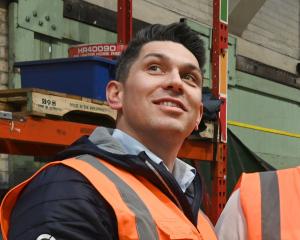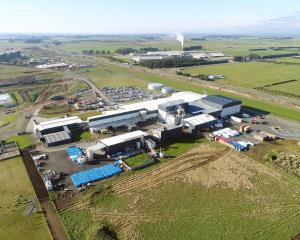
Ravensdown Fertiliser Co-operative chief executive Rodney Green said yesterday, that the Clarendon deposit had become viable as the world price of phosphate rock soared from $75 a tonne in 2007 to $740 a tonne now, as countries shored up supplies of the mineral to increase their food production.
Phosphate is a crucial component in many fertilisers, and New Zealand uses about one million tonnes a year.
Mr Green said the resource could yield 34 million tonnes, enough to make Ravensdown self-sufficient in superphosphate for 22 years.
"This opportunity could be a boon to farmers and could result in the New Zealand economy becoming self-sufficient in phosphate rock, saving $960 million on current prices in foreign exchange a year," he said.
It would be three months before investigations confirm the viability of the deposit, between Waihola and Milton, which was last worked during World War 2.
He described initial signs as "encouraging".
The Clarendon deposit was discovered in 1902 and mined until 1924 and again in 1943 and 1944, when Japan occupied the phosphate-rich island of Nauru.
Mr Green said about 200,000 tonnes was recovered during that time.
The resource covered 450ha on eight Clarendon farms, and initial work was focused on determining its quality and quantity.
"There is a pretty strong imperative to get this going as soon as we can," he said.
Mr Green said the world had plenty of phosphate, but China and Togo had imposed export taxes to ensure there was sufficient for their food production needs, while the other main sources in Morocco and Russia were isolated and transport costly.
In contrast, the Clarendon deposit was 3km from State Highway 1 and the main trunk rail line and 40km from the company's Ravensbourne fertiliser works, slashing shipping costs to a fraction of the current $180 ($US120) a tonne.
Because of the age of the titles, the various mineral rights were privately owned by the landowners and Blackhead Quarries.
All were supportive of the investigation, Mr Green said.
One of the landowners, Tony McDonnell, who lives in Phosphate Rd, said agriculture and the country needed a local fertiliser resource to ensure the sector continued to underpin the economy.
He used 300 tonnes to 400 tonnes of superphosphate a year on his farms, but soaring international prices had made it a costly input.
"If it proves to be big, this would be a large operation and would bring a lot of money into the Otago economy," he said.












